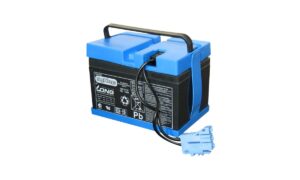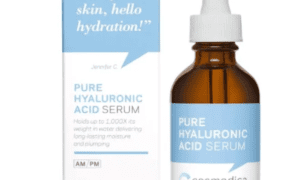In today’s digital world, a laptop is more than just a tool—it’s a daily necessity. Whether for remote work, study, or entertainment, battery life defines the experience. But when your laptop battery starts to fail and you need a replacement, how can you be sure you’re buying a genuine one?
This question isn’t just about price or performance. Fake or low-quality batteries can pose serious safety risks. According to the U.S. Consumer Product Safety Commission, over 83,000 laptop batteries were recalled in the past five years due to overheating, fire hazards, or premature failure—many linked to non-original components.
The market is flooded with battery sellers, especially on platforms like Amazon, eBay, and Taobao. While some offer authentic OEM batteries, others push counterfeit or substandard products disguised as “original.” For the average consumer, it’s not always easy to tell the difference.
What Is an Original Laptop Battery?
When we talk about an “original laptop battery,” we’re referring to a battery manufactured by the Original Equipment Manufacturer (OEM)—the same company that built your laptop, or a certified supplier authorized by them.
For example, if you own a Lenovo ThinkPad, an original battery is one produced either by Lenovo or by its official partners, such as SMP (Simplo Technology Co., Ltd) or LG Chem, which are listed suppliers for Lenovo. The same holds for HP, which uses battery makers like Celxpert, Samsung SDI, and Panasonic.
These original batteries are designed, tested, and validated to meet strict electrical and thermal standards required by the laptop manufacturer. They come with:
- Exact voltage and amperage requirements
- Built-in safety circuits for overcharge and overheating protection
- Firmware compatibility for proper BIOS/UEFI communication
- Genuine serial numbers and barcodes that match the original database
In contrast, aftermarket or third-party batteries may meet some of these requirements, but are not manufactured under the same quality assurance processes. Even worse, counterfeit batteries—which may look like OEM products—are often assembled using recycled cells, lack proper thermal protection, and sometimes omit critical battery management system (BMS) firmware entirely.
Why OEM Matters for Performance and Safety
An original battery is calibrated to communicate with your laptop’s embedded controller. This ensures:
- Accurate power readings
- Safe charging behavior
- Thermal monitoring
- Sleep and wake cycle integration
For example, Apple’s macOS system checks battery identifiers. If it detects a non-original battery, users may see warning messages like “Service Recommended” or “Battery Not Verified.”
HP Sure Start, a security feature on HP laptops, may even block firmware-level charging from unauthorized batteries, especially in enterprise environments.
Telltale Signs of a Genuine Battery
Identifying whether a laptop battery is original requires more than just checking the packaging. Counterfeiters are skilled at mimicking appearance. However, certain details can reveal whether a battery is truly OEM—or a convincing fake.
Let’s break down the most reliable indicators:
- A. Manufacturer Labeling and Part Numbers
Original batteries always include:
- The brand name, such as Lenovo, HP, Dell, or Apple.
- A specific part number (e.g., L18M3P71, PA5208U-1BRS, or A1496 for MacBook Air).
- A serial number or QR code that traces back to manufacturing records.
- A unique date code, indicating when and where it was made.
Compare the part number on the battery with what your laptop’s user manual or manufacturer’s website recommends. If it doesn’t match, it’s likely a non-genuine part.
Also check the font quality. OEM fonts are clean, aligned, and professionally printed. Fakes often show inconsistent spacing, fuzzy printing, or spelling mistakes.
- B. Build Quality and Weight
Genuine batteries have solid construction. You’ll notice:
- Even seams and no loose components
- Secure screw heads, not glued or snapped plastic
- No bulging, which signals poor internal design
Also, original batteries tend to be heavier. That’s because they use full-capacity lithium-ion cells, while counterfeit versions may be partially filled or reuse aged cells. As a rough guide:
- A real 6-cell Dell battery weighs about 315–350 grams
- A fake version might weigh only 260–280 grams
Use a digital kitchen scale if needed. A weight difference of 10–20% is often a red flag.
- C. Packaging and Documentation
Original batteries are packaged with care:
- Anti-static bags or sealed trays
- OEM-branded boxes, not plain cardboard
- Printed safety warnings and usage instructions
If your battery arrives in bubble wrap or without a box, it’s almost certainly aftermarket or counterfeit. Some fake batteries even claim to be “OEM Compatible”—this is not the same as “Original.”
- D. Certification and Safety Symbols
Look for legitimate international safety symbols such as:
- CE (European safety compliance)
- UL (U.S. safety lab certification)
- FCC (U.S. electronic compliance)
- RoHS (Hazardous substance restrictions)
- UN 38.3 (transport-tested for lithium batteries)
Genuine batteries often include embossed or laser-etched logos. Fake ones may use stickers or printed icons that look faded or inconsistent.
You can even verify some UL certification numbers online via the UL database.
- E. Firmware and System Compatibility
Most OEM batteries use embedded chips to sync with your laptop’s BIOS or operating system.
On Windows, tools like HWMonitor, BatteryInfoView, or BatteryMon can reveal:
- Manufacturer name (e.g., Samsung SDI, LG, or SMP)
- Original design capacity vs current capacity
- Cycle count and wear level
If the system reads the manufacturer as “Generic” or returns blank data, it’s likely not a genuine part.
On MacBooks, press and hold the Option key and click the Apple logo > System Information > Power. If it shows “Battery Installed: Yes” and “Condition: Normal,” it may be original. Anything else, like “Service Recommended,” usually means third-party.
- F. Holograms and Anti-Counterfeit Tags
Major brands include unique identifiers:
- HP uses holographic stickers with shifting color bars
- Lenovo often prints FRU (Field Replaceable Unit) numbers and anti-tamper tags
- Apple includes engraved model info and barcodes matching system specs
These tags are difficult to replicate. If they’re missing—or clearly stickers with poor lamination—that’s a warning sign.
Where and How to Buy Genuine Laptop Batteries
Knowing the difference between OEM, aftermarket, and counterfeit batteries is only half the battle. The next challenge is finding a trusted source. With so many sellers online—some deceptive and others poorly regulated—it’s essential to shop smart.
This chapter outlines where to buy authentic, safe, and reliable batteries, and how to avoid fraudulent listings.
- Buy Direct from the Laptop Manufacturer
This is the safest and most reliable option. All major brands sell official batteries through their online stores or authorized partners.
Why it’s safe:
- 100% guaranteed to be genuine
- Includes warranty (usually 6 to 24 months)
- Designed for perfect hardware and firmware compatibility
Official Stores:
- HP: store.hp.com
- Dell: dell.com > Support > Parts
- Lenovo: lenovo.com > Parts & Accessories
- Apple: Visit Apple Store or authorized service centers
Tip:
If your model is discontinued, contact the brand’s customer support directly. They may refer you to certified service providers.
- Purchase from Authorized Resellers
Many brands partner with verified retailers who are licensed to sell OEM parts. These include major online and offline channels.
Trusted Retailers:
- Amazon (sold and shipped by Amazon, not third-party)
- Newegg (check seller rating and fulfillment source)
- StoreShoppe(This site offers laptop batteries for most top brands and ships worldwide)
- CDW, Insight, B&H (for business-class batteries)
Always check:
Seller’s return policy
Listing details: Avoid vague terms like “OEM equivalent”
Customer reviews—especially those with images or detailed performance feedback
Avoid:
- “Ships from China” listings with low prices and long delivery times
- Unbranded or no-name stores on marketplace platforms
- Use the Part Number to Search Accurately
Before shopping, identify your exact battery part number (e.g., L18L3PF3, A1322, WDX0R). Then:
- Google the part number + “OEM” or “original”
- Cross-reference multiple listings and compare images
- Avoid listings with only generic terms like “Laptop Battery for Dell”
Using the part number eliminates confusion over compatibility and helps filter out fake listings.
- Buy from Local Repair Centers (With Caution)
Some professional laptop repair shops stock OEM batteries, especially for common brands like Dell or HP.
Pros:
- Immediate installation and testing
- Personalized service and guidance
- Often include a short-term warranty
Cons:
- Prices may be higher
- Need to verify if battery is original—request the part number and brand upfront
Ask them directly: “Is this an OEM battery from [brand], or a third-party equivalent? May I see the packaging or part number?”
- Watch for Warranty and Return Policies
Always confirm:
- Return period (14–30 days minimum)
- Warranty (OEMs usually offer 6–12 months)
- Whether return shipping is covered
Legitimate sellers are transparent and upfront. If a seller dodges your questions or refuses to provide details, walk away.



































